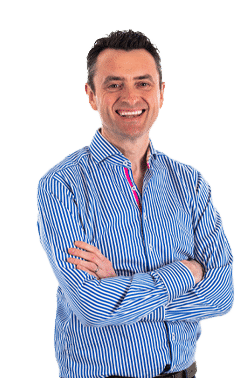In this article
If you’re applying for a mortgage and finding the process more complex than expected, you’re not alone.
Many buyers, particularly first time buyers, feel the weight of lender checks, paperwork and strict affordability rules.
It hasn’t always been like this. The mortgage market has changed a lot since the 2000s, and one of the biggest turning points was the credit crunch of 2007 and 2008.
To understand why things are different now, it helps to look at what changed and why.
What Happened Before the Credit Crunch?
There was a time when mortgage applications were a lot more relaxed.
In the years leading up to 2007, many lenders were offering mortgages to people with poor credit histories, and in some cases, even allowing applicants to self-certify their income without any real checks.
This type of lending was driven by an approach known as securitisation. Mortgage lenders would bundle up their loans and sell them on to investors, often large financial institutions.
The more mortgages they approved, the more they could sell, and the more money they could bring in. Over time, the checks and balances weakened.
Some of these mortgages started to go unpaid and the financial system began to feel the impact. Banks lost trust in each other, major institutions collapsed, and lending ground to a halt.
Speak to an Advisor – It’s Free!
Schedule a free callback from one of our experts today.
- All situations considered
- Transparent and honest mortgage advice
- We search 1000s of purchase and remortgage deals
Our customers rate us 4.9/5
How Did That Change the Mortgage Market?
After the credit crunch, everything came under review. Regulators and government bodies looked at how the system had failed, and lenders were told to tighten up.
In the UK, this led to the introduction of the Mortgage Market Review in 2014, which put a stronger focus on affordability.
Lenders were now required to take full responsibility for checking that a mortgage was suitable and affordable for the borrower, not just at the start, but over the full term.
Self-certification was banned, and new rules were introduced around how lenders assess your income, spending and other financial commitments.
What Do Lenders Look for Now?
The process today is far more thorough than it once was. When you apply for a mortgage, the lender will look closely at:
- Your income, including basic salary, bonuses and any other sources
- Your regular outgoings, such as credit cards, loans, childcare costs and subscriptions
- Your credit history and how you’ve managed borrowing in the past
- Evidence of savings and how you’ve built up your deposit
- Proof that you can sustain the repayments over time
These days, lenders often look more closely at regular spending habits than they did in the past.
Alongside your usual credit commitments, they may consider things like childcare costs, monthly subscriptions or lifestyle spending, all as part of making sure the mortgage is affordable long term.
Is It Still Possible to Get a Mortgage?
Yes, absolutely. It just requires a bit more preparation than it used to.
You’ll need to be organised with your paperwork, aware of your credit profile and ready to show that you’re managing your money sensibly.
Lenders are still lending. They just have clearer rules to follow and more boxes to tick. The right advice can make all the difference when navigating this process.
Why Mortgage Brokers Matter More Than Ever
With so many lenders applying different criteria, it’s easy to feel stuck or unsure where to turn. This is where working with a mortgage broker really helps.
We take the time to understand your financial situation, explain what lenders will be looking for and recommend the right deal for your circumstances.
We’ll help you get your documents in order and give you clear, honest feedback on what’s realistic. It is not about bending the rules.
It is about navigating them properly. That has become more important than ever since the credit crunch changed how mortgages are handled.
We’re Here to Help
UK Moneyman was formed in 2009, right after the credit crunch. We’ve seen how much things have changed, and we’ve helped thousands of customers adjust to the new way lenders operate.
From that very first year to now, our focus has always been the same: finding the right mortgage for each individual and making the process as stress-free as possible.
If you want to know more about how we started and how we’ve grown over the years, take a look at our story.
Whether you’re a first time buyer or picking things back up after a break from the market, we’re here to guide you through it just like we’ve done since the beginning.







